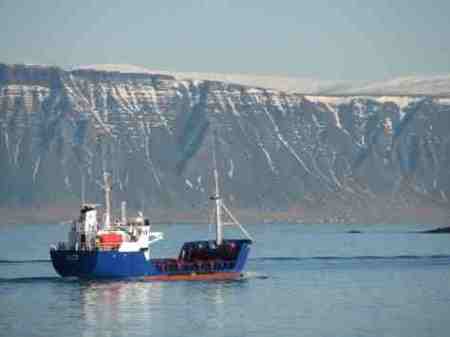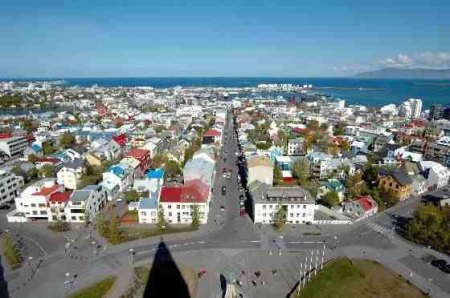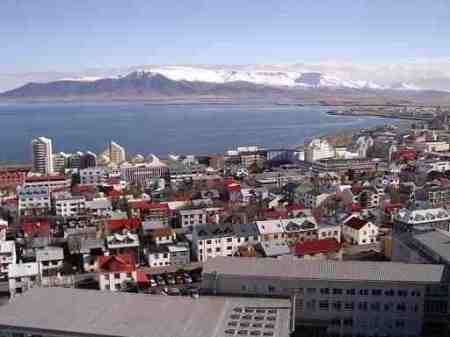Reykjavik’s foundation is equally romantic and beguiling as its
location, set on the fringe of the Atlantic Ocean, surrounded by a lunar
volcanic netherworld, with the shadowy hulk of Mount Esja in the
background. Legend has it that ‘Arnarson’ a viking leader named the
place Reykjavik (‘Smokey Bay’) after the steam rising from the hot
springs . Today, these numerous geothermal springs, running beneath the
city, provide almost all the heating and water in the city. The only
by-product of this system is a faint odour of hydrogen sulphide,
especially evident when showering. But the low level of fuel emissions
gives the city clean air and crystal clear skies. The lack of pollution
is also due to the comparatively small size of the capital.
The city’s nightlife is perhaps fuelled by the fact that most
Icelanders let go of their weekday Nordic calm and instead reveal the
fiery Celtic side of the their heritage (the Vikings kidnapped many
Scots and Irish on their way over), especially evident in their
friendliness and openness to foreign visitors.
During the day, Reykjavik is a far more sedate place with trim
houses, rubbish-free streets and an easygoing pace of life. There are
bountiful cultural attractions, countless cafés, six geothermal swimming
baths and a myriad of day trip opportunities into the stunning
hinterland. One of the most charming things about Reykjavik is that
everything visitors would want to see is handily located within walking
distance. Cultural festivals are also currently multiplying and
maturing, as Iceland begins to establish its cultural identity.
The vast, beautiful landscape of Iceland lends itself to innumerable
outdoor activities. Visitors to Reykjavik will be impressed by the
city’s proximity to nature and struck by the cleanliness of the city
itself. There are plenty of possibilities when planning outdoor
excursions during your stay in the capital.
With the increase in numbers of international travellers in the past
years, Iceland has assimilated many outdoor sports from other countries
and adapted them to its own natural environment. Sports such as kayaking
and white-water rafting are not native to Iceland, but they fit
perfectly with the natural surroundings.
Nightlife in Reykjavik is legendary for its energy and stamina. It is
not uncommon at the weekend to spend the whole night partying at one of
the city’s many nightclubs, known for their cool atmosphere and stylish
patrons. There are nightclubs to suit a variety of tastes in terms of
decor and music.
Those looking to see the sights are recommended to take one of the
many available tours with many different themes: seeing such sights as
waterfalls, spouting geysers and glaciers, horse-riding, whale-watching,
sea-angling.. there’s something for everyone.
Epicures will find plenty to keep them happy when wining and dining
in the nation’s capital. Icelandic cuisine, like many things in Iceland,
benefits from the open-mindedness of the Icelandic people and the
willingness of the culture to adapt foreign tastes to its own.
Icelanders may be modest about many things, but food is not one of them.
Reykjavik offers a wide variety of hotels and guesthouses to cater to
the needs of visitors. Icelanders are known for their warm hospitality,
reflecting their recent roots in old rural society.
All the main hotels are well situated within the city, with easy access to all the attractions of the downtown area.
Đăng ký:
Đăng Nhận xét (Atom)







0 comments:
Đăng nhận xét